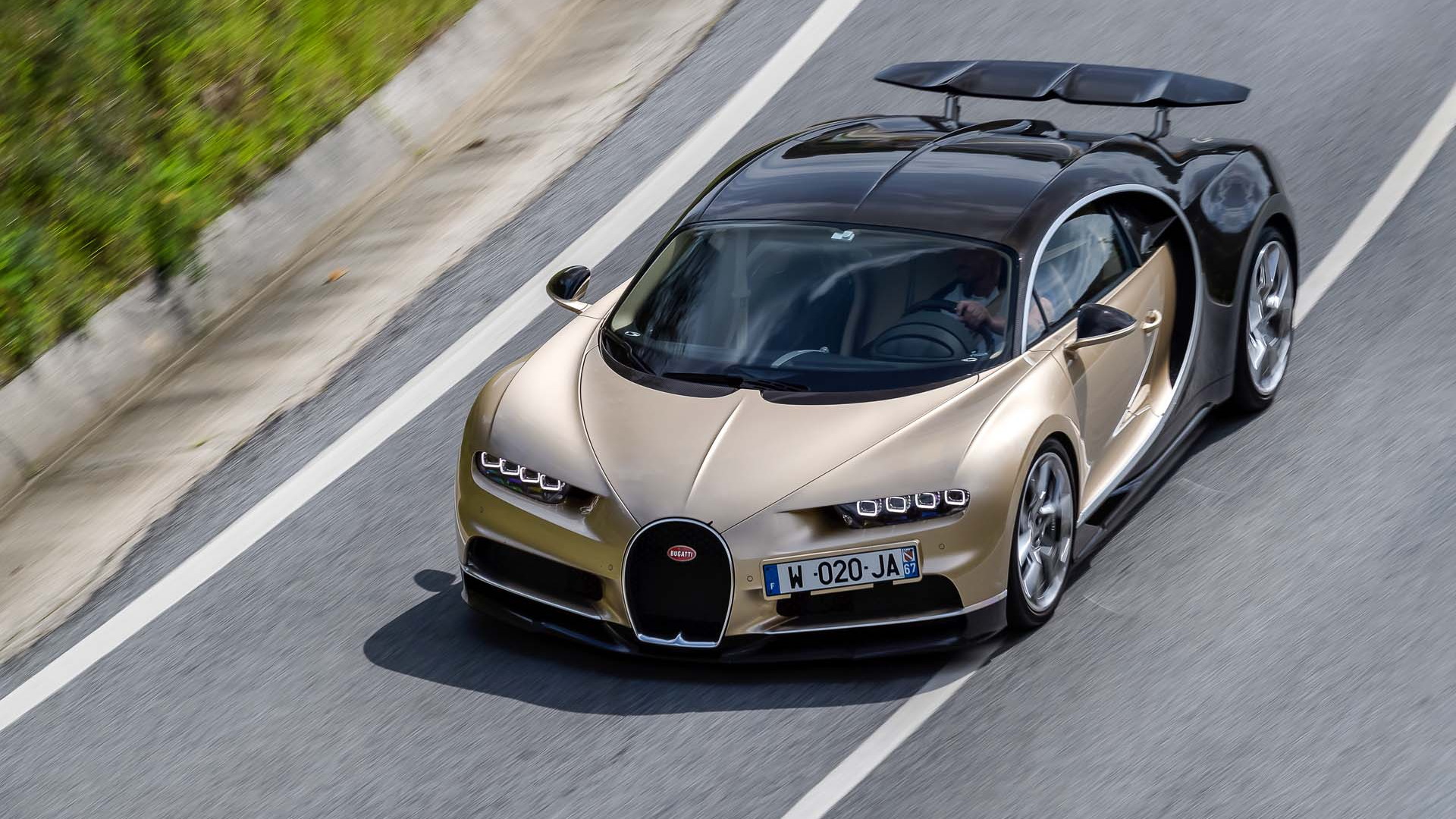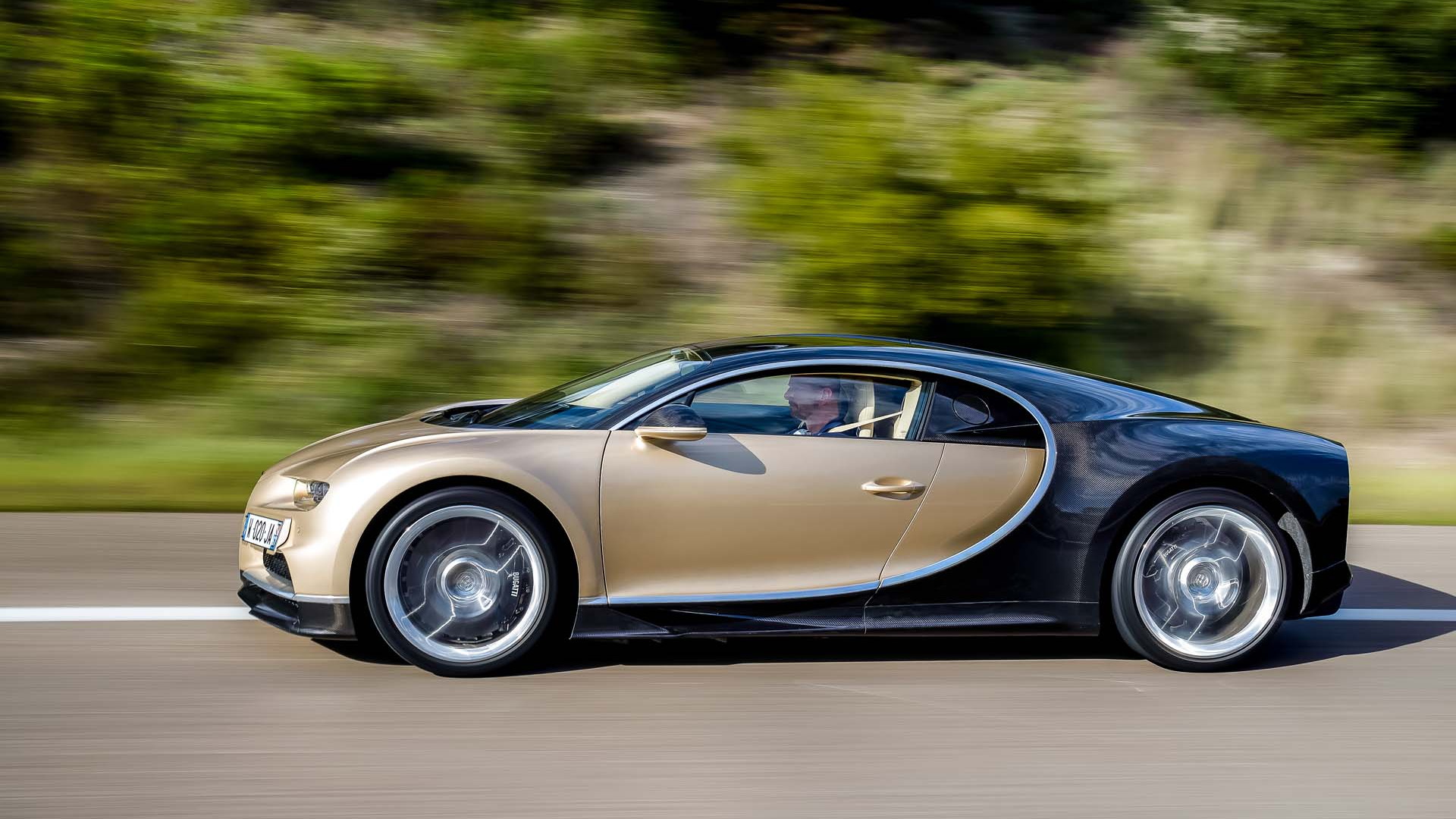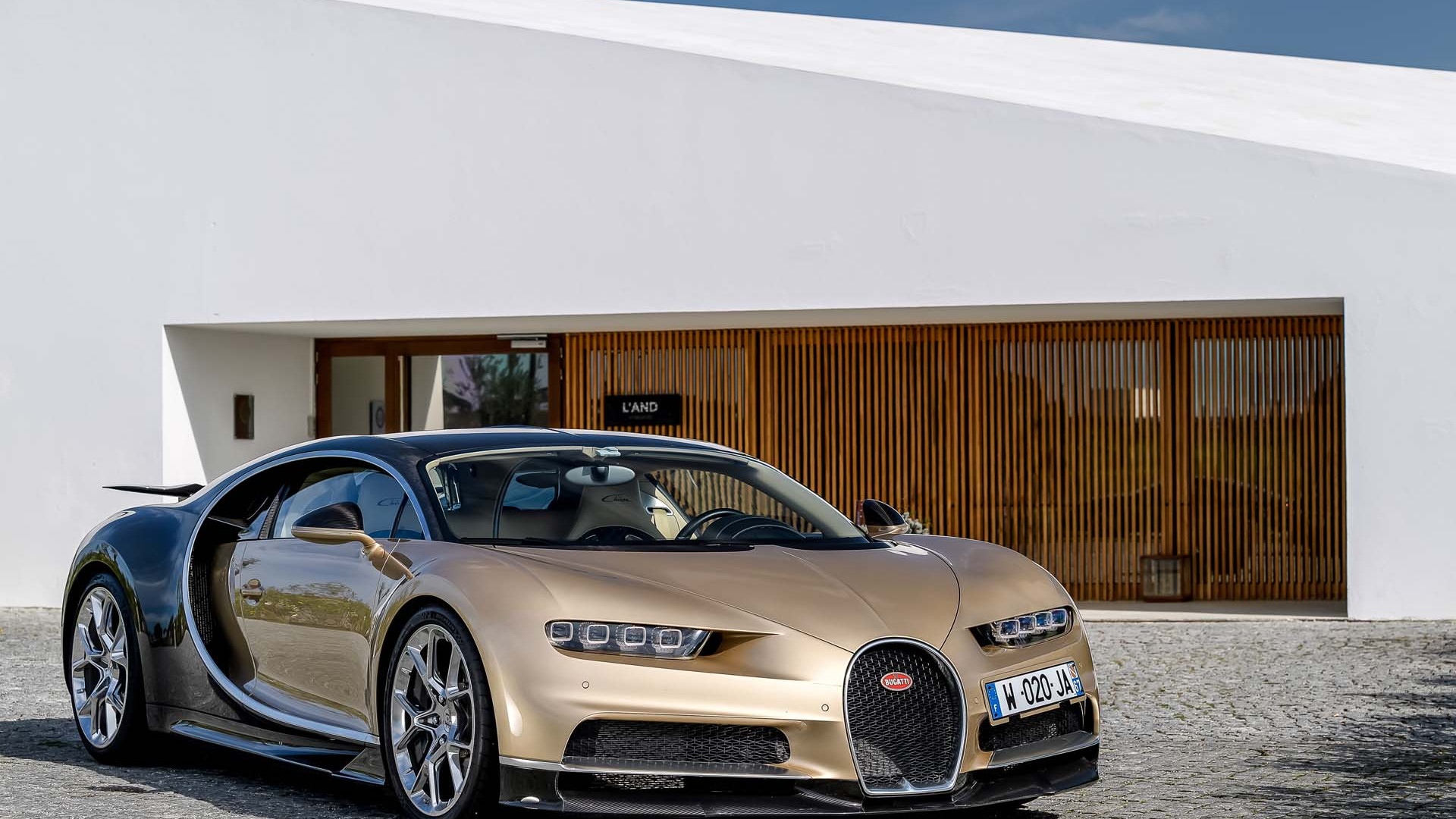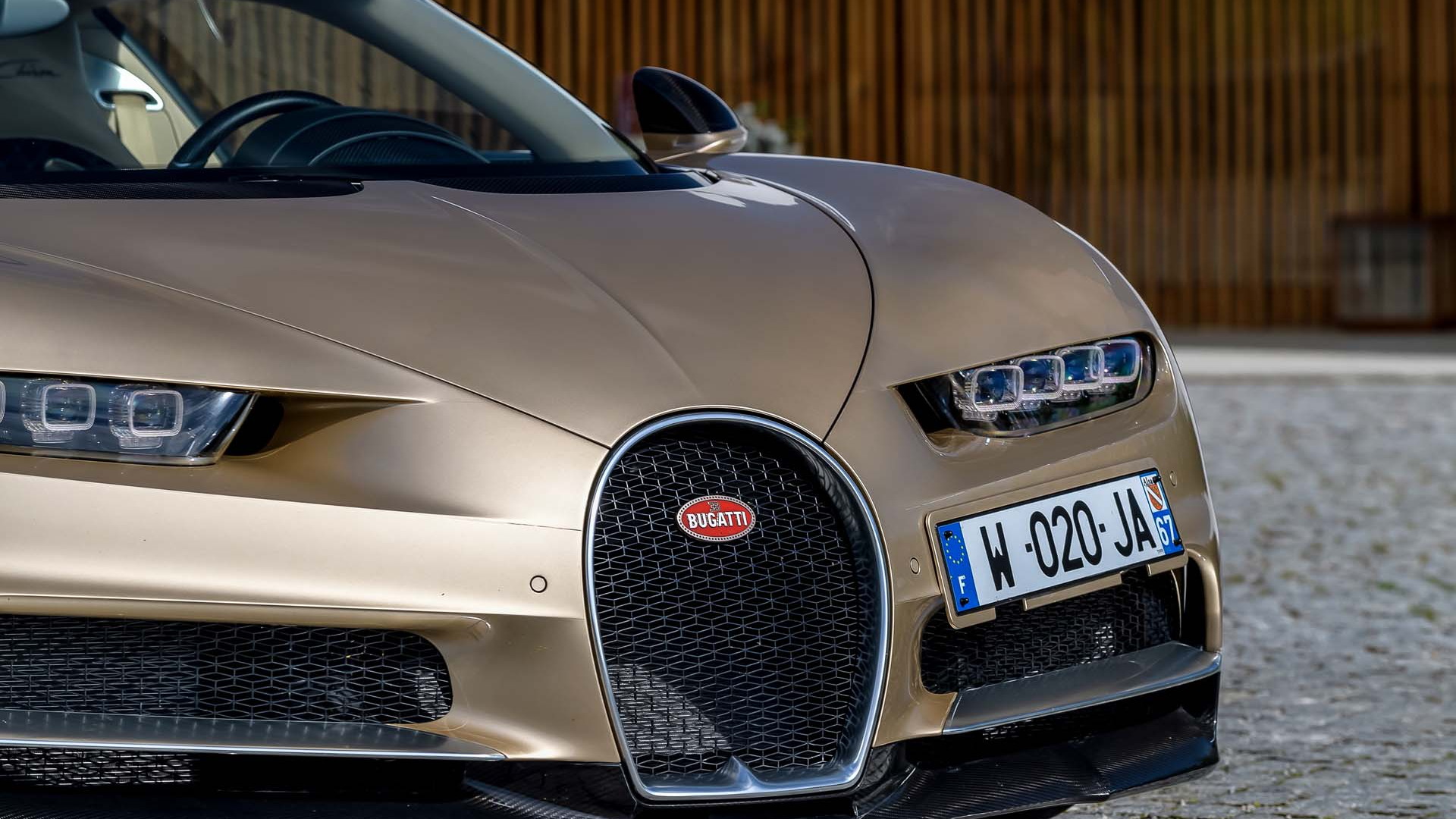When a Bugatti Chiron fires up, the sound it produces is loud—surprisingly, dramatically, crazy loud, even while idling at a mellow 650 rpm. Sixteen cylinders, eight liters, four turbochargers and six exhaust pipes can do that. But if you’re lucky enough to be manning the driver's seat, there’s a hermetic seal between you and the titanium exhaust’s gloriously raucous howl, not to mention the peering cell phones and hungry eyes you’ll likely encounter in the wild.
The Chiron means many things to many people. For some, it’s merely the sequel to the Veyron, the up-to-1,200-horsepower hypercar that Bugatti produced for a decade. For others, it's the continuation of an epic car that broke barriers and paved the way for the even more ambitious follow-up, which, despite threats like Dieselgate and the emergence of hybrids and EVs on the hypercar scene, still marches to the beat of its own gasoline-powered drum.

Bugatti Chiron first drive

Bugatti Chiron first drive

Bugatti Chiron first drive
The new Bugatti Chiron brings a slew of updates over the Veyron. Beneath the sultrier skin and more luscious, elongated silhouette are a new adaptive suspension system, active underbody aerodynamics, a stiffer and wider carbon fiber chassis, and a vastly improved wheel/tire combo that does away with Michelin’s late, not-so-great Pax system. The wheels are lighter than the Veyron's and the tires are massive Michelin Pilot Sport Cup 2s, 285/30R20s up front and 355/25R21s in the back.
CHECK OUT: 2017 Porsche 911 Carrera GTS first drive review: The bargain 911
The main attraction is, of course, the massive W-16 powerplant whose output grows by a quarter, to 1,480 horsepower. The mill gets 95 percent new parts in the name of lighter weight, improved thermal efficiency, and higher output. Crucially, the turbochargers have grown 68 percent larger and now work in two stages: a smaller pair handles the 2,000-4,000-rpm rev range until the second set picks up, extending the staggering 1,180 lb-ft torque plateau to 6,600 rpm. Airflow is diverted between the two using a flap made of Inconel, a superalloy capable of withstanding temperatures of up to 1,800 degrees.
Because of the considerable volume of exhaust gasses, a watermelon-sized catalytic converter roughly six times larger than the average car’s is employed. Spread out its interior surfaces, and they would fill a surface area of 43 football fields. The intake manifolds, formerly made of aluminum, are now carbon fiber, helping save a total of 11.24 pounds; at full load, 1,000 liters of air flow into the cylinders per second. Another bit of engine porn is the slenderized titanium connecting rods, which have been strengthened to handle 2,800 pounds of load yet weigh only 336 grams apiece.
Left-brain engineering aside, the Chiron’s leather, aluminum, and subtly carbon fiber-accented interior proves a reassuringly sparse place to clear your mind (and possibly your bladder, depending on your high-speed bravado). The dash has been de-cluttered, save a centralized binnacle of four anodized and knurled multifunction gauges. The instrument cluster trades multiple gauges for a single, humongous analog speedometer surrounded by three high-resolution TFTs. The needle on my test car goes to 500 kph; U.S.-spec models get a 300-mph top peg.
The W-16 starts up with a touch of the blue “Engine” button and a squeeze of the brake pedal, igniting the 16 cylinders before they settle into that aforementioned laidback idle. Tap the shifter to the right and the Chiron’s forward motion immediately feels more organically tied to the accelerator pedal than it did in the Veyron, largely thanks to the smaller turbos that enable a crisper throttle response. By 2,000 rpm, the torque response is immense. Tapping into the vast reserves of oomph produces a tsunami of acceleration. It feels more like a Maglev train than a passenger car; it’s eerily swift, seamless, and relatively quiet. With the windows up, the titanium exhaust allows some of the engine sound to make itself known, but there’s also enough insulation to suppress undesirable low frequency booms and allow the more delicate, high frequency wheezes and whines of the wastegate and turbocharger to make themselves heard.

Bugatti Chiron first drive

Bugatti Chiron first drive

Bugatti Chiron first drive

Bugatti Chiron first drive
Once underway, momentum helps the Chiron feel relatively spry on its toes. Compared to the Veyron, there’s a greater feeling of connection to the road thanks to the lighter wheels. Steering weight becomes significantly altered by turning the steering wheel-mounted dial from EB (adaptive) mode to Autobahn or Handling. Damping, ride height, and power distribution are also affected, with each mode lending the Chiron a noticeably different driving dynamic. The weird thing about speed in this two-seat sled is how swiftly and imperceptibly it sneaks up on you. Glance down at the speedo, and chances are the number you see will surprise you. “No officer, I really didn’t know how fast I was going.”
DON'T MISS: 2017 Chevrolet Camaro ZL1 first drive review: too fast to be fun
My Portuguese is spotty, so just in case, I mentally rehearsed contrite body language on the backroads outside of Lisbon while coaxing the Chiron into doing things that would surely land me in a local prison. The right pedal is sensitive and outrageously effective, and it’s nearly impossible to become jaded by the comically outlandish acceleration it creates. As I push straightaway speeds incrementally higher, I conversely brake harder, which yields shockingly short stopping distances. Just letting off the gas at triple-digit speeds triggers an initial deceleration, thanks to the air brake that swiftly lifts and raises the drag coefficient to an SUV-like 0.59. Instigate the hulking carbon ceramic stoppers, and the Chiron slows like it grabbed a virtual arresting cable. During my first few stops, I overbraked to the point where I realized I had to treat the left pedal with just as much delicacy as the right.
Hustling the Chiron around corners is akin to maneuvering an F-35 through a box canyon: there’s far more thrust on hand than you’re likely to use, especially with the knowledge that this 4,400-pound beast is capable of drifting in Handling mode. Resisting the tendency toward tail happiness, it seems the Chiron can manage its heft rather capably while changing direction. Stability, not agility, is the prevailing tendency as it tackles the bends, but considering the vehicle’s sheer mass, the complexity of its drivetrain, and the challenges of laying that power to the ground, the Chiron performs admirably, delivering considerably more steering feel and chassis communication than its predecessor. Equally impressive is its improved ride quality. Compared to the always-stiff Veyron, the Chiron’s adaptive suspension proves particularly adept and manages low-speed cobblestones and bumpy surfaces that would have otherwise been bone-rattling.
It isn’t until I hit the Portuguese highway that I can fully tap into the Herculean powerplant. On these open stretches, passing traffic is like a Concorde getting around a 747—totally and absolutely out of scale.

Bugatti Chiron first drive

Bugatti Chiron first drive
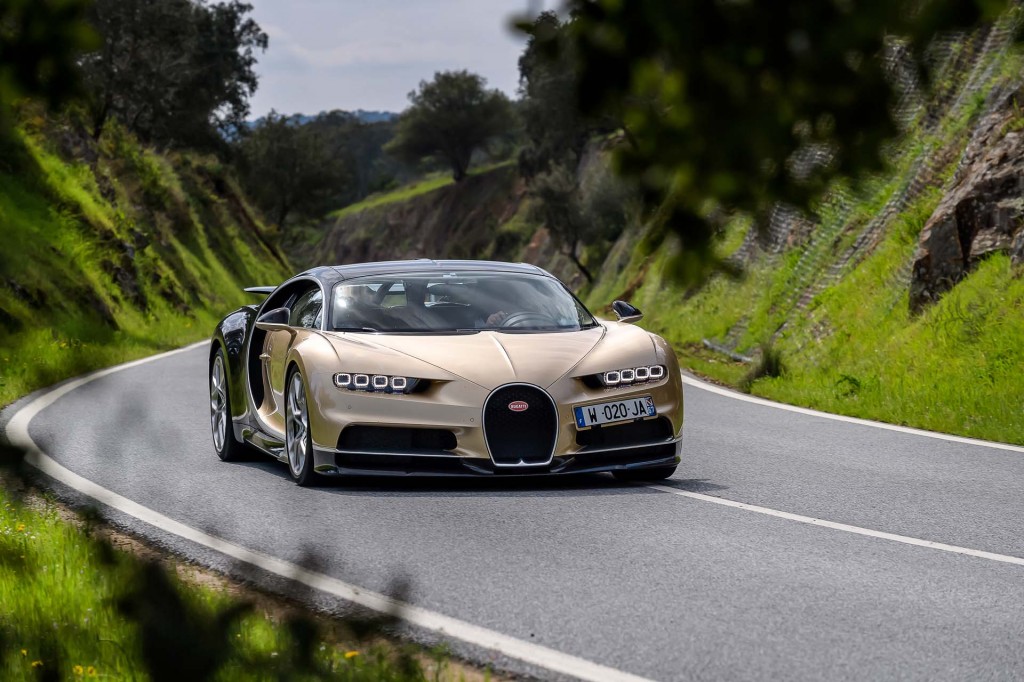
Bugatti Chiron first drive
The startling effectiveness of the engine makes me feel all but invincible, and the 7-speed dual-clutch transmission plays along nicely with smooth, quick shifts. Tapping the shifter to the right puts the transmission in Sport mode, a largely unnecessary setting that holds gears longer and triggers two- and even three-gear downshifts, making it more like a Sport+ setting you’d find in an all-out exotic car. Whatever the mode, the 7-speed upshifts automatically at redline, which is good because the last thing you’d want to do at high speeds is find the virtual tachometer, which is a bit out of the way to the left of the speedometer.
ALSO SEE: 2018 Mercedes-AMG E63 first drive review: The deep-knee Benz
At those higher velocities, the feeling of stability, aided by the redirected airflow for downforce, is nearly as reassuring as the catapulting engine power or the mighty brakes. This is about as close to four-wheeled omnipotence a driver can feel, with a package whose road manners have been refined enough to inspire even more confidence (and perhaps hubris) than before.
In some ways, the $2,998,000 Bugatti Chiron is the answer to a question nobody asked. As the mighty Veyron neared the end of its production run, sales slowed to a crawl, putting the brand’s future in a cloud of doubt. If the Chiron’s sales performance is any indication, the Volkswagen Group’s double down on Bugatti is paying dividends: half the 500 car allotment is already spoken for, and production has increased from 50 cars per year to 70. The success is considerable enough to stave off a higher performance variant for quite some time.
When asked, Bugatti boss Wolfgang Dürheimer suggested there is enough demand for the current configuration, whose top speed is electronically limited to 261 mph, to fill all 500 orders. When the mad geniuses in Wolfsburg choose to release an even higher performance version—and they will—is anybody’s guess. Until then, the Chiron stands as the king of all exotics.
Godspeed, king.
--Basem Wasef
